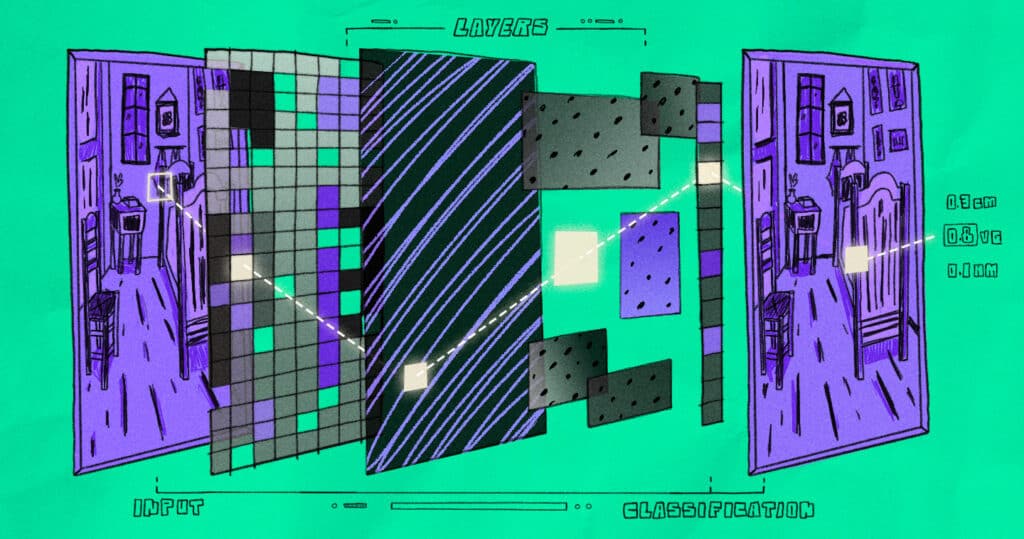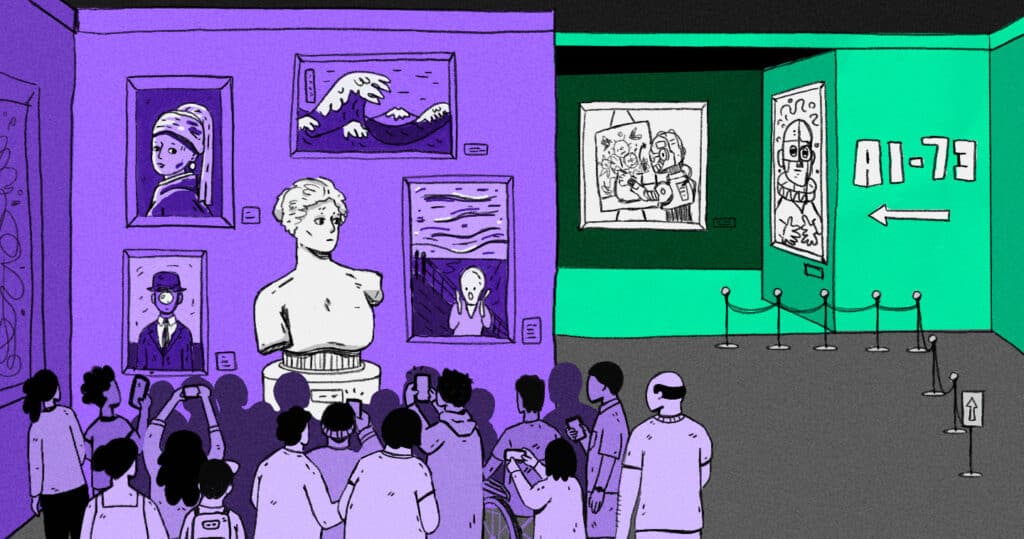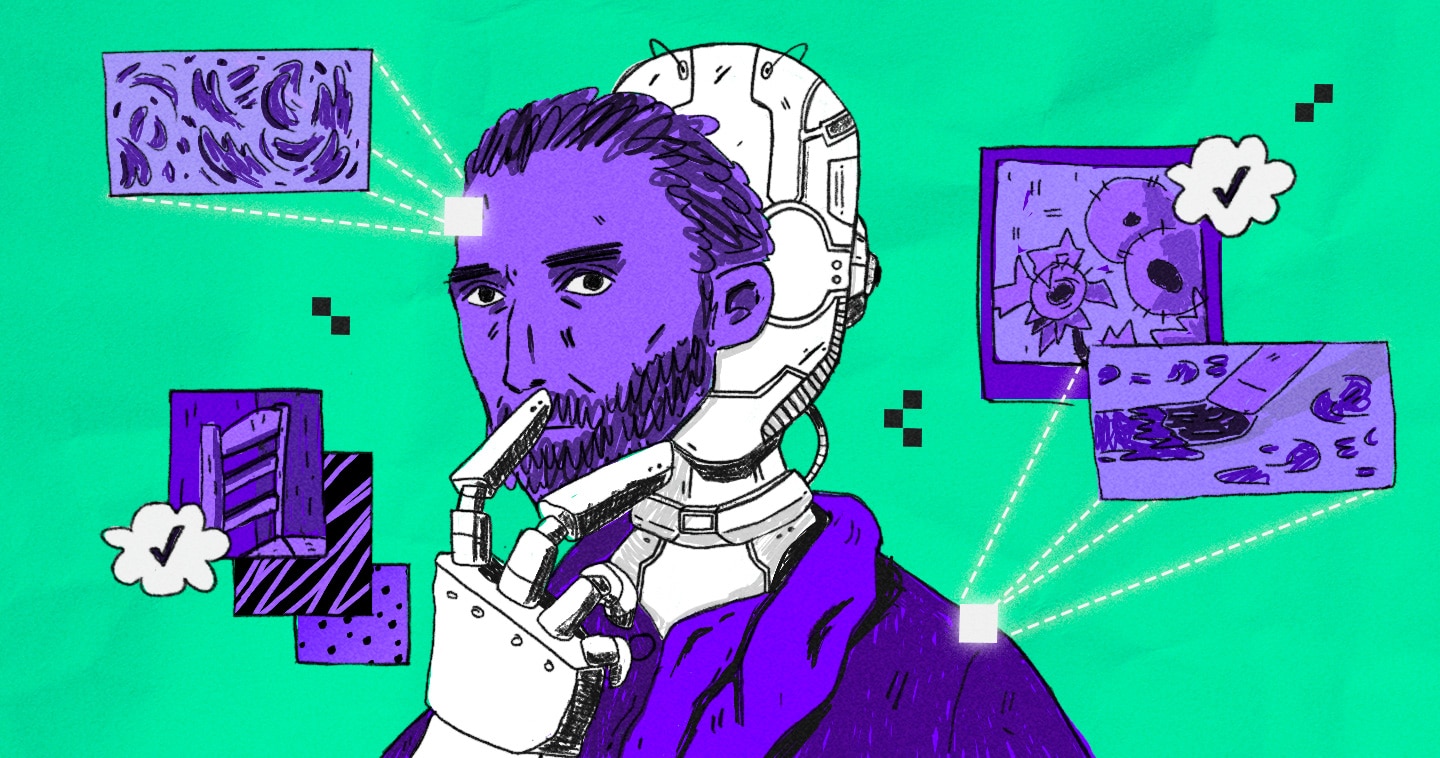Authenticity and uniqueness are the currency of the art world. A fake Van Gogh means nothing, but a real Renoir means everything. But, as with every creative pursuit, AI is situated to disrupt the art world, both past and present. AI, powered by curated data sets, is positioning itself as a tool to better understand art history and a new medium for artists of the future.
Recognize and validate
In the world of art sales, validation is vital for all parties. Sellers need credibility, buyers want assurance. Previously, art would be validated by an art historian, someone trained in a specific artist, school, era, or region, to recognize the smallest intricacies across dozens of works. While these people are eminently talented, people are fallible. They can still have biases or vested interests, couched in subjectivity. Extensive, objective data analysis, though, is where AI shines.
“Our technology transforms art verification by adding transparency and objectivity. Unlike traditional methods reliant on human experts, our system remains unbiased by personal preferences,” said Dr. Carina Popovici, CEO and co-founder of Art Recognition, via email. “This blend of transparency, accuracy, and objectivity positions our technology as an unparalleled tool in the field of art authentication.”
The Switzerland-based Art Recognition specializes in using AI models to validate works by the great masters. To date, the company has validated more than 500 paintings all over Europe, including Van Gogh’s “Self-Portrait” displayed at The National Museum of Art in Norway.
In 2019, Art Recognition was asked to do an analysis of the painting, among other hotly debated Van Gogh works, to confirm its authenticity. By training their convolutional neural network on hundreds of Van Gogh’s works, as well as labeled fakes like the infamous Wacker forgeries, the company assessed the authenticity of the work at 97%, one of the most accurate assessments the model has ever produced.
While the company’s model is currently focused on its mostly Western European clientele, Dr. Popovici is confident the product can be trained on any painting, given enough data.
“Our AI doesn’t have a preference between training on Western or Eastern art, as long as there’s an adequate number of images for training,” she said. “On average, a minimum of 100 images serves as a baseline for training and can take between several hours and 1-2 days.”
But there are limitations to this technology. Most notably, the AI is only geared toward validating a work through comparison to authentic pieces. If there was a group of paintings done by a pupil but incorrectly attributed to their master, the algorithm wouldn’t be able to group them together or identify them as sharing similarities. This is where AI leavens the work of art historians.
“We believe that art and AI operate together in a dynamic interchange that expands our horizons,” said Dr. Popovici. Without a wider contextual knowledge of the art world, without human intuition about people and socio-history, AI isn’t more than a tool without its laborer. With rigorous data and training, though, AI can help elevate the work of scholars and historians.
Build and discover
For many, though, AI is more than a tool for scholars and sellers. People like Dr. Ahmed Elgammal, founder of the AI art platform Playform, see it as a nascent field for the working artist.
“Every artist needs an identity. Photographers needed to discover ways to assert that identity in the 19th century, and it took time to convince the world that art wasn’t just paint on a canvas,” Elgammal said. “AI is an art, a medium, and a tool; and that’s where a new artistic identity will be forged.”
Playform, unlike other generative AI, is trained on data offered by the user. Instead of scraping art without the consent of artists via the internet, Playform asks users to upload their own datasets. The users can choose masterworks that are in the public domain or upload their own work, then watch as the model reflects back its interpretation of the data.

“AI is not one size fits all, and every artist will use the technology how they want. What we find driving most users to our platform is that control of your own model,” explained Elgammal. “Artists want to execute a concept, no matter what they make, so working with the model to produce your vision is just as much a skill as knowing what kind of canvas or paint brushes to use.”
The barrier to entry in this field has been lowered. The data to train these models took up entire servers, but it’s possible for an artist to carry the mold of their artistic AI in their pocket, on a single industrious flash drive. For Elgammal, this represents an opportunity to flip the narrative of art and AI’s relationship.
“Much of AI art began with technologists, not artists, and those tools required a lot of knowledge to get the most out of them,” said Elgammal. “That’s why Playform is so important; we aren’t for making a social media graphic, we’re focused on artistic identity, control, and privacy.”
Like with art validation, it’s clear that AI enhances artistic vision. Without someone to curate styles, artists, ideas, subject matter, or techniques, the model would be rudderless. It can assign values and make connections, but it can’t make sense of what it’s made, nor what it means.
Irreplicable, irreplaceable
There’s much ado about AI in the arts, and it’s not without reason. But the reality is that people aren’t lining up to see Art Bot Beta-73’s exhibit at The Met, and maybe they never will.

“A couple of years ago, galleries were interested in AI exhibits, but recently there is some backlash,” Elgammal said. “Until we figure out the difference between making art and images, I don’t think there’s anything to worry about.”
That distinction between images and art is key. Images are for mere consumption in a tweet or TikTok. But art—whether it be written, visual, or musical—is necessarily about humanity. AI offers new tools to explore and express it, but it’s always been up to us to make sense of it all.
Artwork by Rachel Garcera



